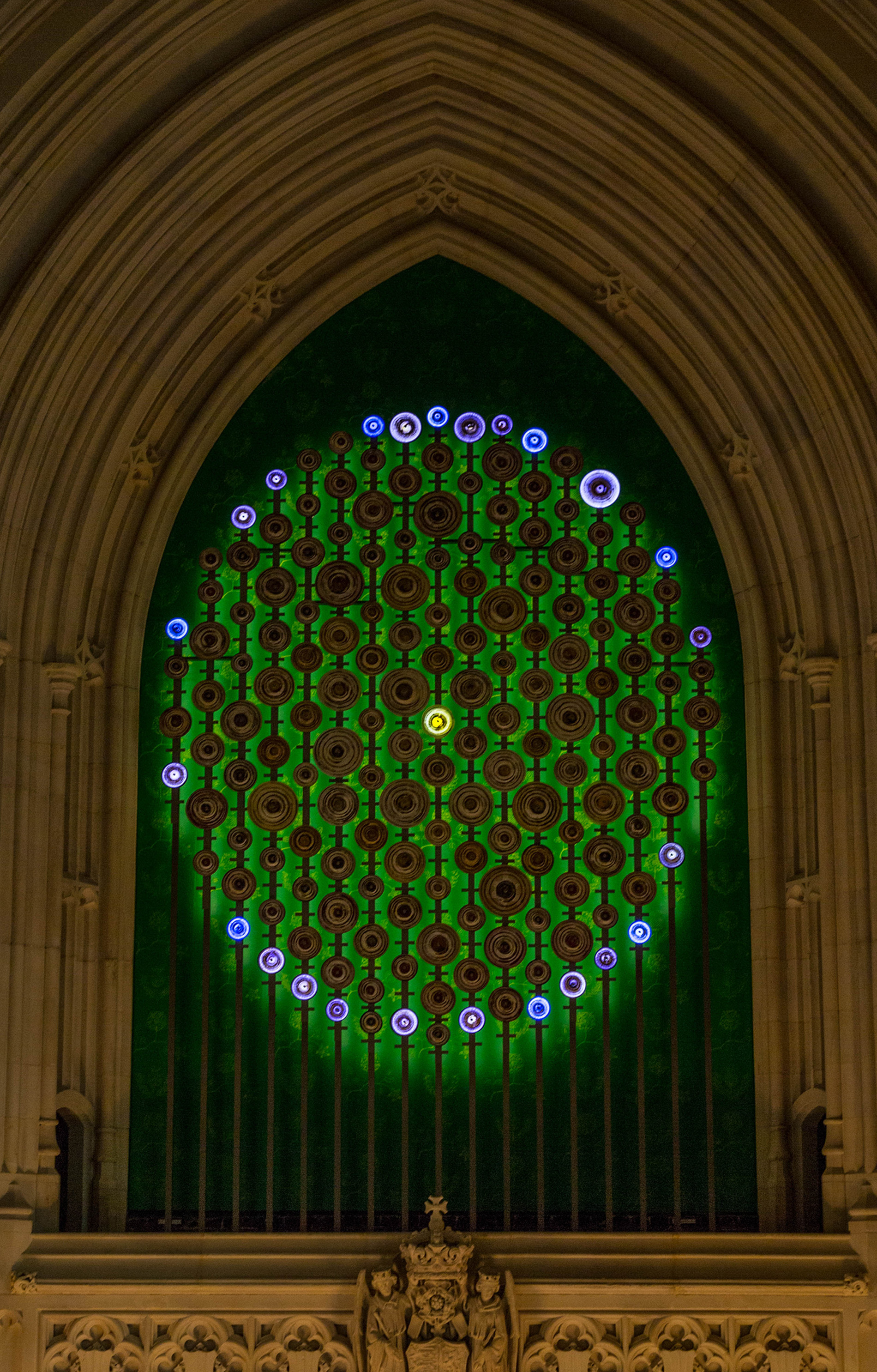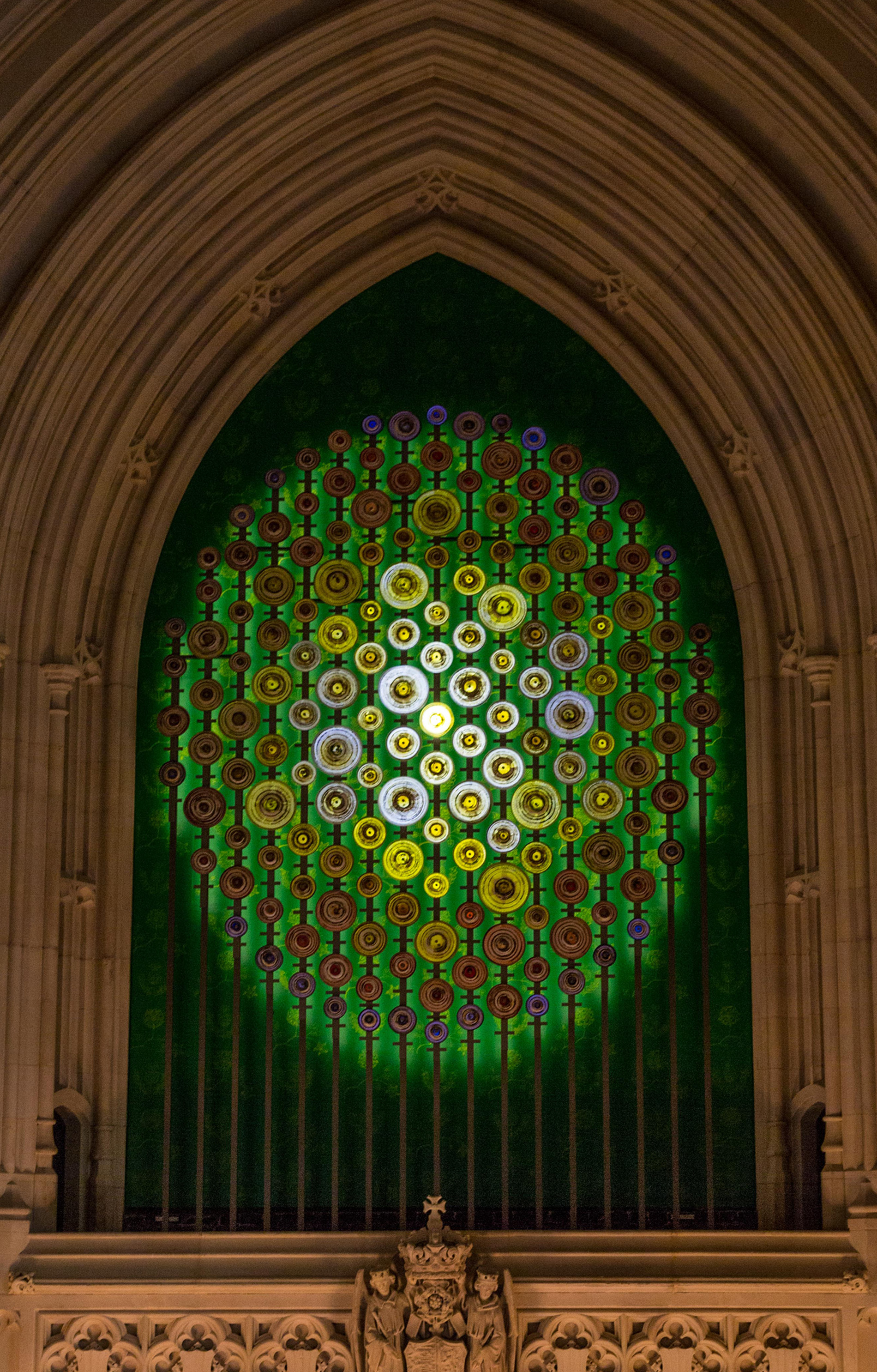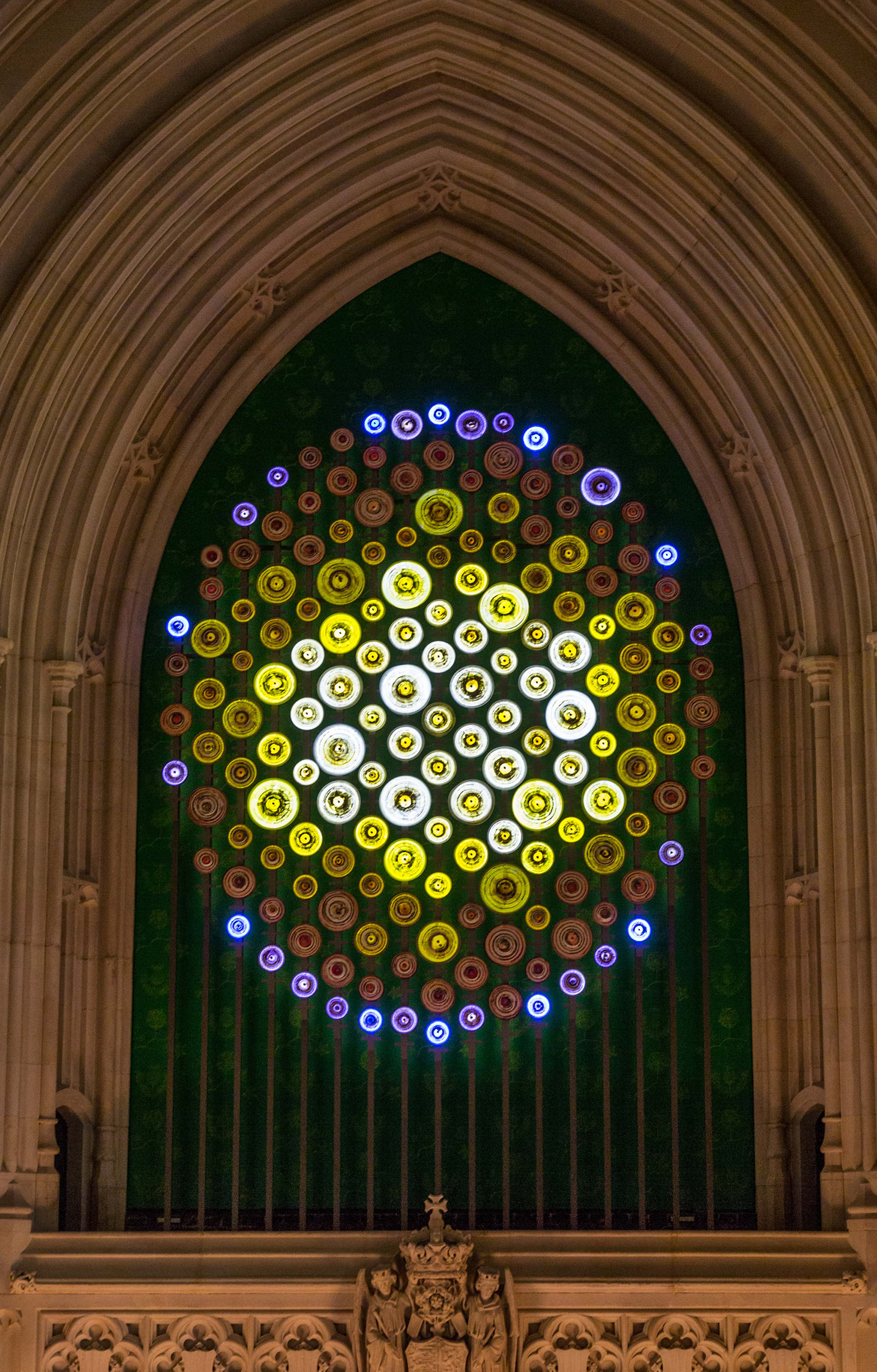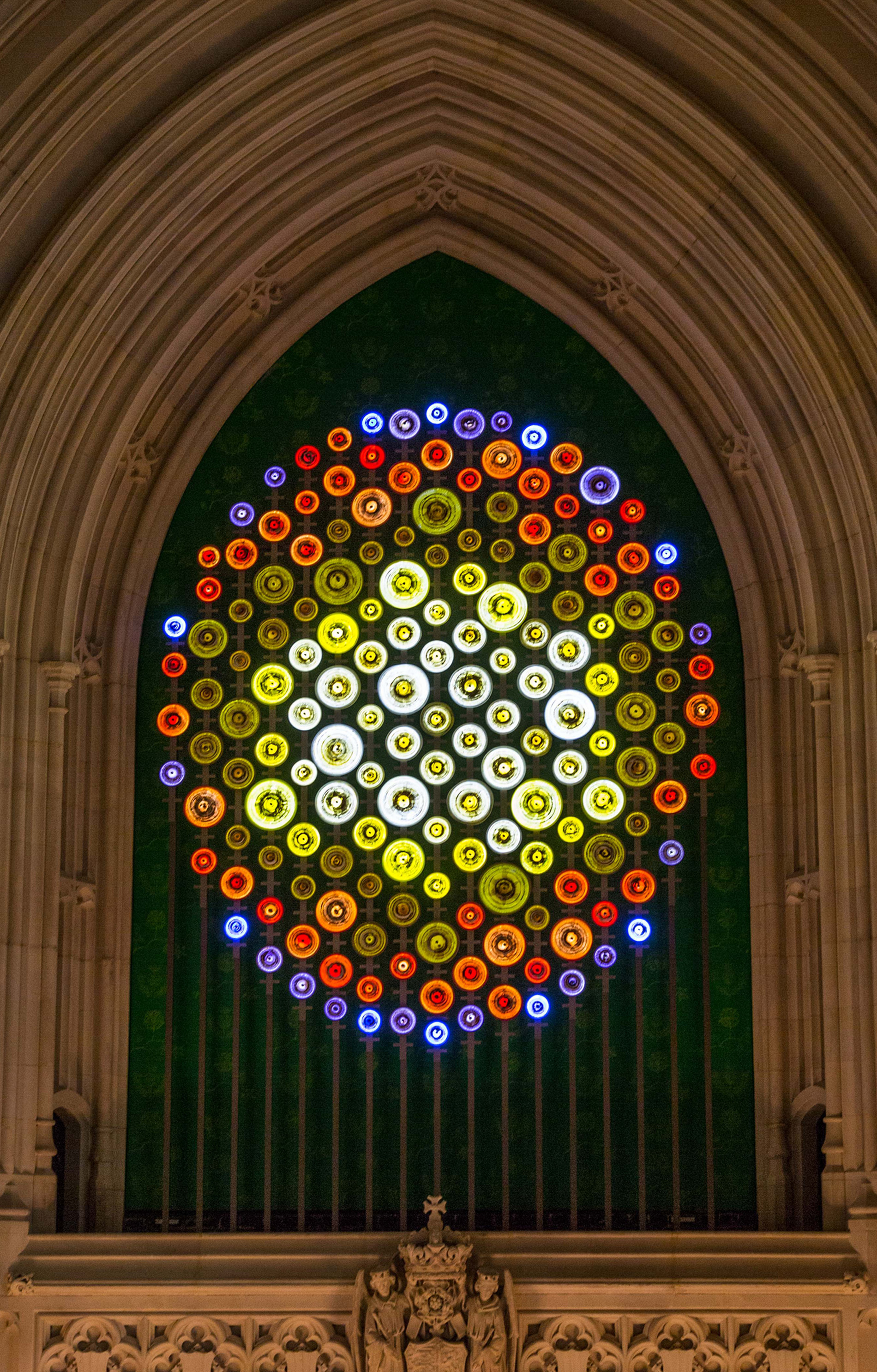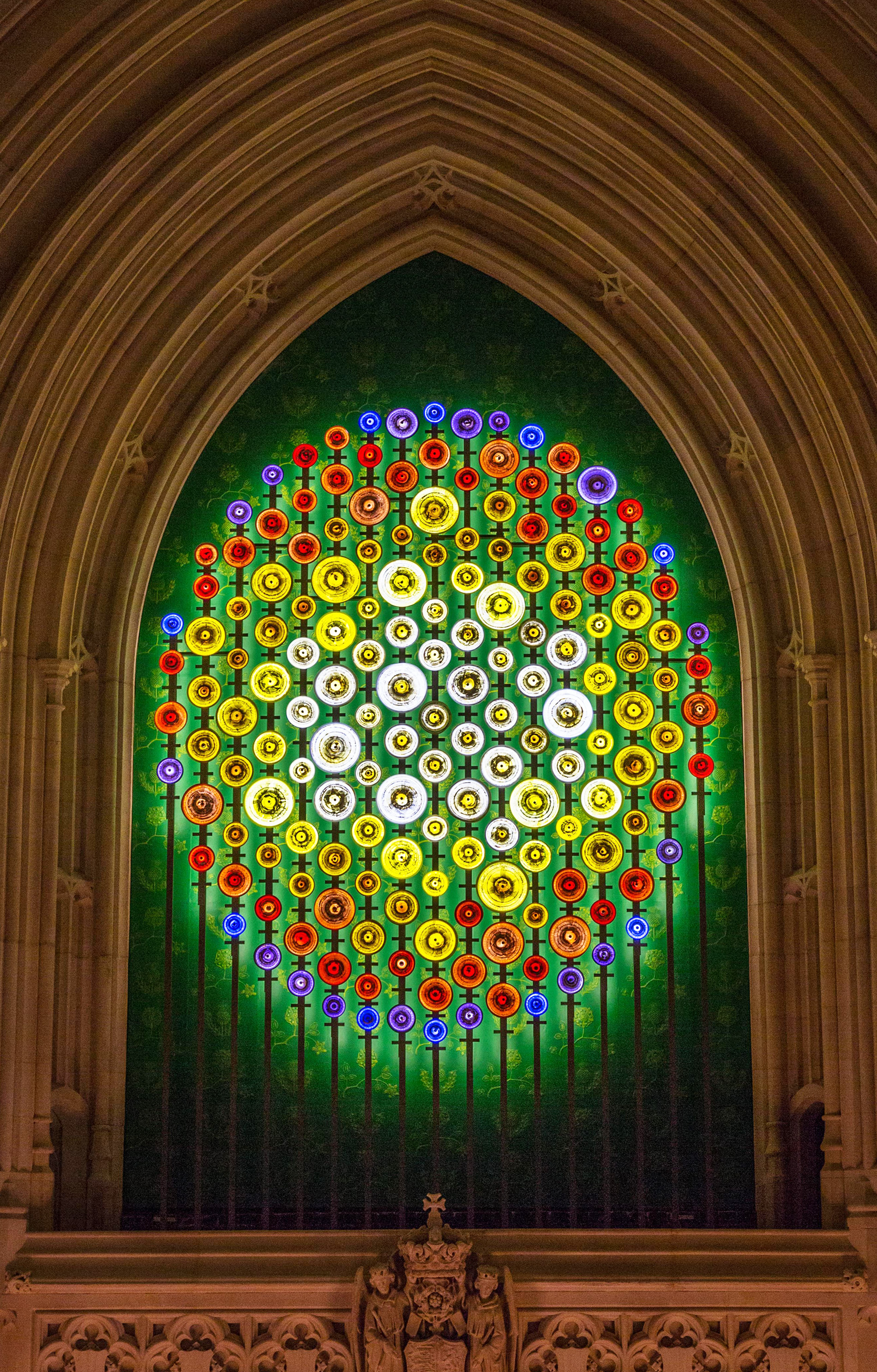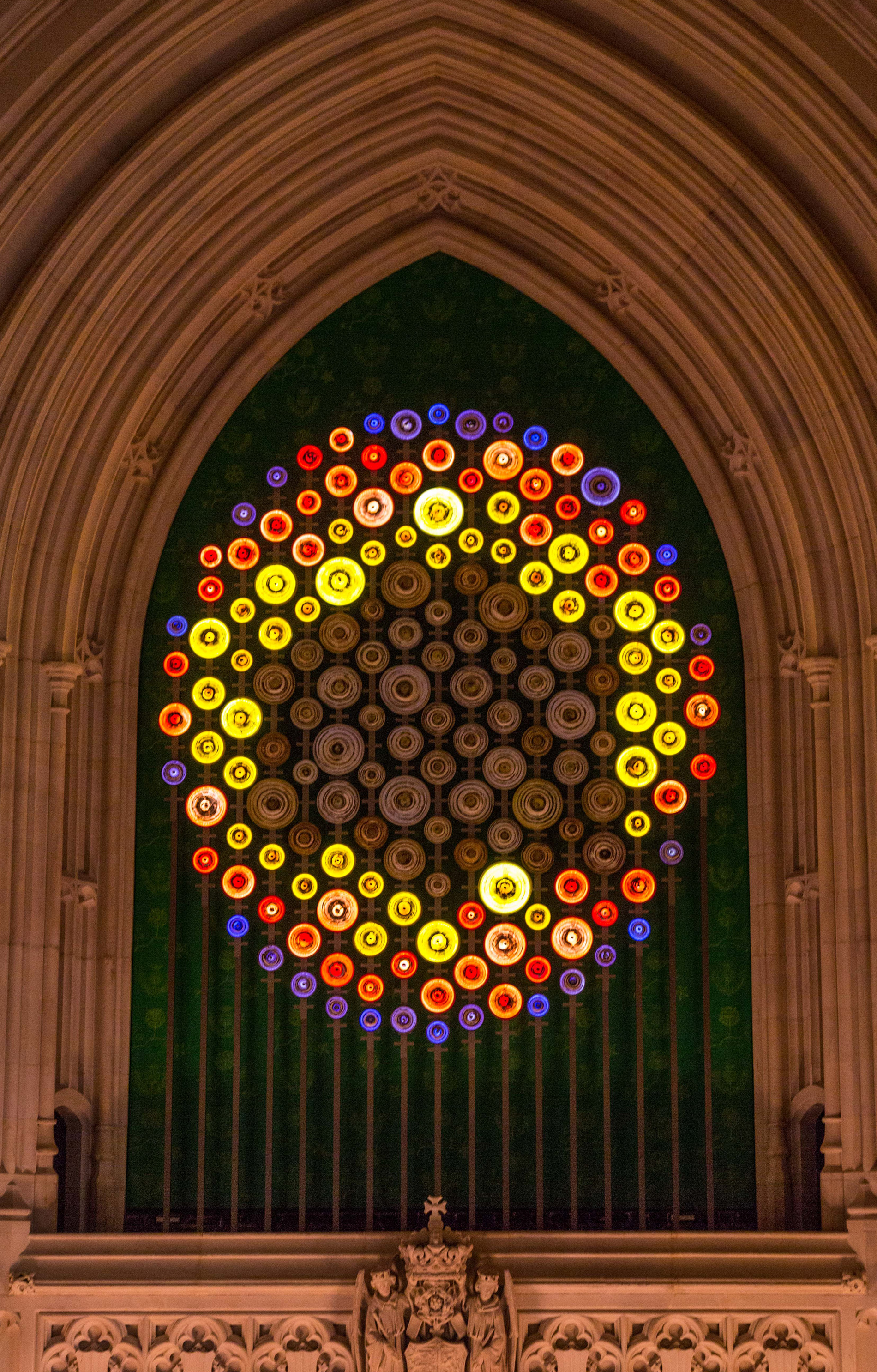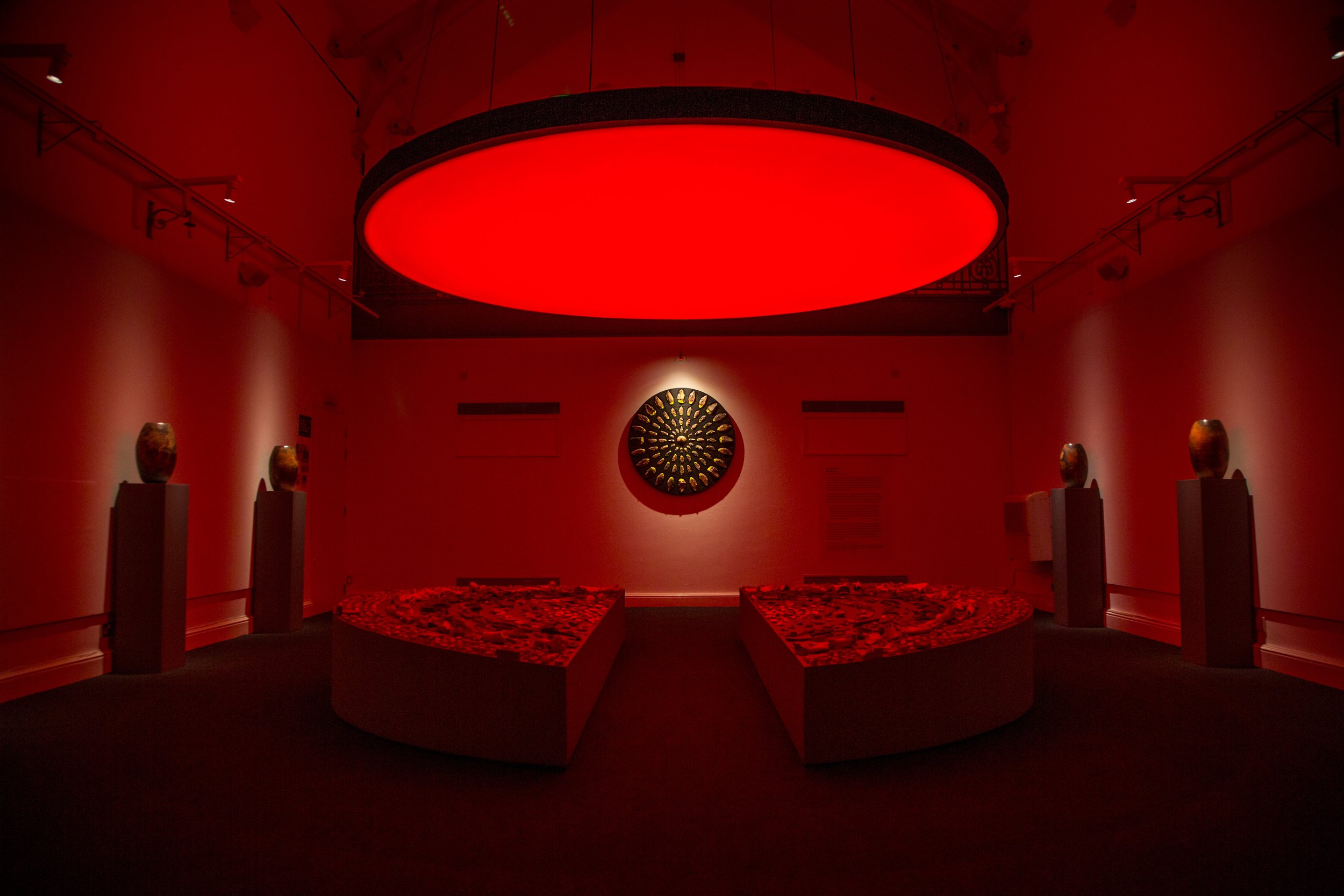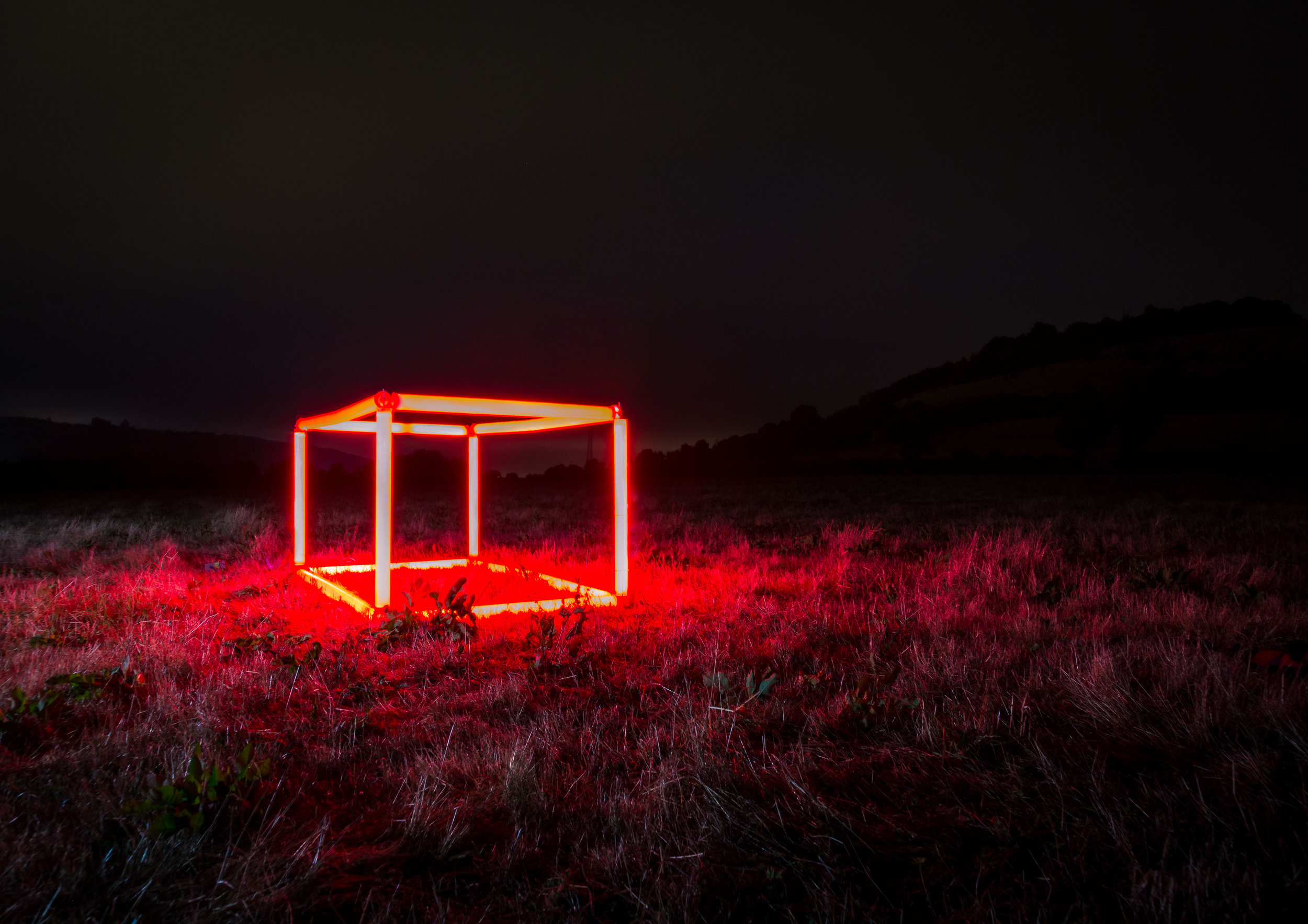On the 7th June, 2016, one hundred and fifty years to the day since the campaign for women’s votes began, New Dawn, an artwork celebrating all the individuals involved, was revealed in Westminster Hall, the oldest part of Parliament. New Dawn is located above the entrance to St Stephen’s Hall, the site of numerous demonstrations, so that viewers of the artwork will literally stand in the footsteps of the hundreds of thousands of women and men who came to Parliament to fight for women’s right to the vote.
New Dawn is a contemporary light sculpture and a permanent addition to the Parliamentary Art Collection, as well as the first piece of abstract art commissioned for permanent display in the historic palace. Measuring over six metres high, the massive scale of New Dawn is intended to reflect the size of the campaign, and the unique hand-blown glass scrolls that make up its dawning sun reflect the many individuals who were involved in the movement and the special contribution they made to modern democracy.
The New Dawn unveiling to a packed Westminster Hall
Photo Credit: Kerry Wilson
The artwork draws on the visual language of Parliament itself. The scrolls are a direct reference to the Act Room at the Parliamentary Archives, where the legislation which brought women the vote and a say in the laws that govern them is stored. The glass scrolls are mounted on a portcullis structure – the principal emblem of Parliament – raised over the entrance to St. Stephen’s Hall, symbolising women’s long-awaited access to democracy.
The circular scrolls combine with the metal portcullis to create 168 distinct ‘Venus’ symbols, representing the women who fought for their right to vote. New Dawn has also been influenced by the campaigners it celebrates. The rainbow of colours used in the artwork reflects the numerous organisations that were involved in the struggle, including the National Union of Women’s Suffrage Societies, the Women’s Social and Political Union, the Women’s Freedom League and the Men’s League for Women’s Suffrage.
The title of the piece comes from the language of the campaigners themselves, many of whom conceived of the vote as offering a ‘new dawn’ for women.
The parchment scrolls in the Parliamentary Archive
Photo Credit: Mat Clark
The scrolls depicted the handblown glass, with the portcullis frame behind. Together they form the Venus symbol of women.
Photo Credit: UK Parliament/Jessica Taylor
The lighting of New Dawn’s sun shape will rise and fall over a twelve and half hour cycle, linked to the tide of the Thames. The ebb and flow of the illumination reflects the ever rising tide of change that campaigners were certain would bring women the vote in time. Each scroll is individually lit, and the appearance of the artwork will change moment to moment, encouraging onlookers to consider the work more deeply and to reflect on the value of the vote and women’s role in democracy.
New Dawn was revealed on the 150th anniversary of John Stuart Mill MP presenting the first mass petition calling for women’s votes in the House of Commons. This date is generally seen as the beginning of more than seventy year’s campaigning for the vote, involving hundreds of thousands of people across the UK.
Placed on the route to the public viewing galleries, as well as the public tour route, New Dawn will educate, inform and inspire the one million visitors who pass though Parliament doors each year.
A look at the making of New Dawn, from conception to the opening night in Parliament. [41 Minutes]
To read Mary's diary throughout the residency, visit www.newdawnartwork.com
Team:
Adam Aaronson, Glass Artist Click for website
Applelec, LED Lightsheet Manufacturer Click for website
Avolites, Lighting Software Click for website
Chris Wilson, WLX productions, Technical Design Click for website
Ed Jordan, Technical Support
Emma Brown, Photographer Click for website
Kengo Kurimoto, Prototyper Click for website
Mat Clark, Technical Support Click for website
Musson Engineering, Metalwork
Paul Clark, Technical Support Click for website
Peter Bridgeman, Technical Support
United Anodisers, Metal Finishing Click for website
Special Thanks:
Claire Hope, Nick Lott, Vince Jack, Akimasa Kurimoto, Roger Kings, Jono Retallick, Peter Ockendon, Alison Carlier.

